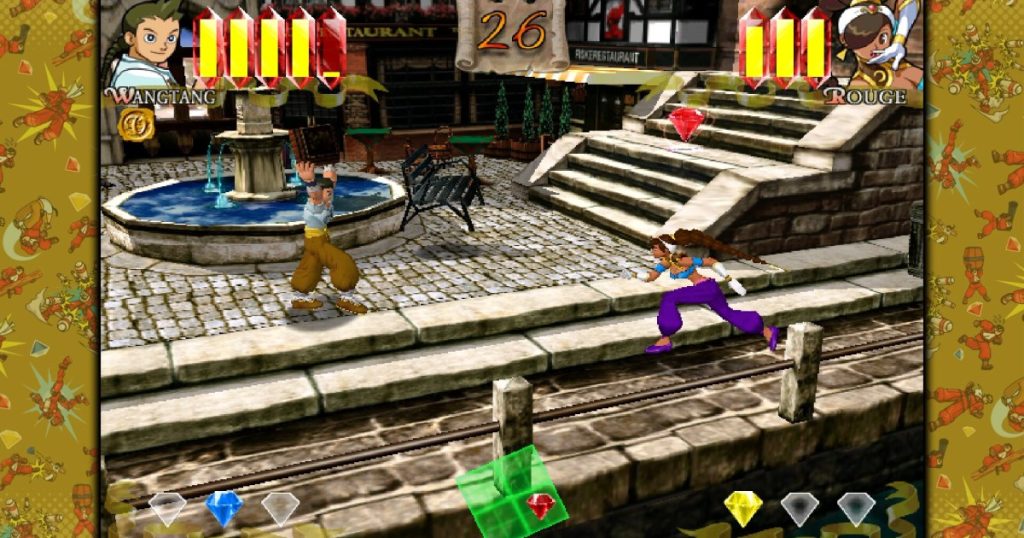Capcom has been doing a great job of keeping its classic library of games playable on current systems through the release of retro collections and remasters. Many of its most beloved fighting games are now available on PlayStation 4 thanks to the Street Fighter 30th Anniversary Collection, Capcom Fighting Collection, and Marvel vs. Capcom Fighting Collection. Now, even more are playable on current platforms with the release of Capcom Fighting Collection 2, which features some classic Capcom vs. SNK games, the two great Power Stone entries, and some more obscure titles.
The two biggest releases in the lineup are the first two Capcom vs. SNK games. Thankfully, we get the enhanced version of the first game — Capcom vs. SNK: Millennium Fight 2000 Pro, which includes two additional characters. It and its sequel, Mark of the Millennium 2001, are both dream crossovers as they brought the most beloved fighters from each company’s lineup of stellar fighting games. They’ve each aged well, although the sequel is definitely better despite the ratio system of the first giving it a unique feel and allowing for teams of up to four fighters (an amount you never see in modern fighters). It’s great to see these two finally on modern consoles, as only the SNK-developed SVC Chaos was available.
Speaking of dream crossovers, Capcom Fighting Evolution is truly a wild, manic fever dream of a title. The crossover fighting game features characters from Street Fighter 2, 3, and Alpha, alongside those from Darkstalkers and Red Earth. Balancing? Not really, each character uses the fighting system from the games they represent. It’s a bit of a mess if you’re looking for a truly competitive game, but as a fun evening with a friend? It is actually a blast, and it’s really interesting to see the different systems interact with one another. It’s a cool oddity in the vein of Fighters Megamix on the Sega Saturn that I can’t help but enjoy.
While the three aforementioned titles all feature Street Fighter characters, the only actual SF game included is Street Fighter Alpha 3 Upper. This arcade version came out in 2001 (not to be confused with the excellent Game Boy Advance port of the same name) and features all the characters from the console release, plus several balance changes. This is the first time an English version has been released, and there’s a lot of variety in Upper, as you can pick from different play styles — thankfully, V-ism has been nerfed from the original. It’s worth checking out if you enjoy vanilla Alpha 3 as the additional characters are a blast.
My most anticipated part of the collection was getting to play Power Stone and its sequel again, which I loved on Dreamcast and PlayStation Portable. The good news is that both games are still a total blast to play, be it solo or online with other players. The 3D fighting game can get quite chaotic as you run around and use weapons, but whether you’re winning or losing, you’re sure to have a smile on your face. Power Stone 2 was what I played the most online, and I was impressed with the netcode as matches went smoothly across the US. It’s been far too long since Power Stone has received some love, so it’s great to see them be a key part of this collection. In a better timeline, we might be getting a new Power Stone right now, but I’ll happily settle for these ports, which each include hidden characters playable.
Finally, the last two games are two 3D titles that aren’t super well known — Project Justice and Plasma Sword: Nightmare of Bilstein. I had never played Plasma Sword before, and the sci-fi fighter isn’t the easiest game to get into. I hit a wall with it and never really enjoyed it, although I’m hoping to revisit it later on. Project Justice, on the other hand, is a real delight. The Rival Schools sequel (where is the original, Capcom?) features a ton of likable characters that pair into teams of threes, and a really fun vigor system that allows you to do team-up attacks. Nearly all of the playable characters from the original return, and the art style has aged relatively well despite it being a 2000 3D title. This is a real standout and is one of the best games in the collection if you’re looking for a surprise.
As noted, there have been various tweaks in all of the games (wonderfully detailed on Capcom’s website) in the Capcom Fighting Collection 2. There’s also a good amount of bonus content, as the in-game museum features a great gallery full of game design documents and art (usually around 70-100 per game), plus the ability to listen to all of the music from each game. The only downside is that there’s no context provided, but it’s still great to see these scans included, as the documents and art are fun to look through.
Capcom Fighting Collection 2 brings together eight fighting games (some beloved, some obscure) into one slick package. Features-wise, those who played the first collection will know exactly what to expect. The long-awaited return of Power Stone and two Capcom vs. SNK games help anchor the collection and make it a worthwhile purchase for anyone with a shred of nostalgia or an itch to know more about fighting game history.
SCORE: 8/10
As ComingSoon’s review policy explains, a score of 8 equates to “Great.” While there are a few minor issues, this score means that the art succeeds at its goal and leaves a memorable impact.
Disclosure: The publisher provided a PlayStation 4 copy for our Capcom Fighting Collection 2 review. Reviewed on version 1.01.


